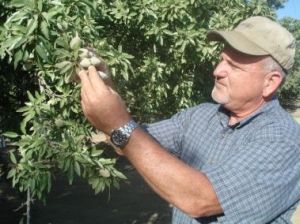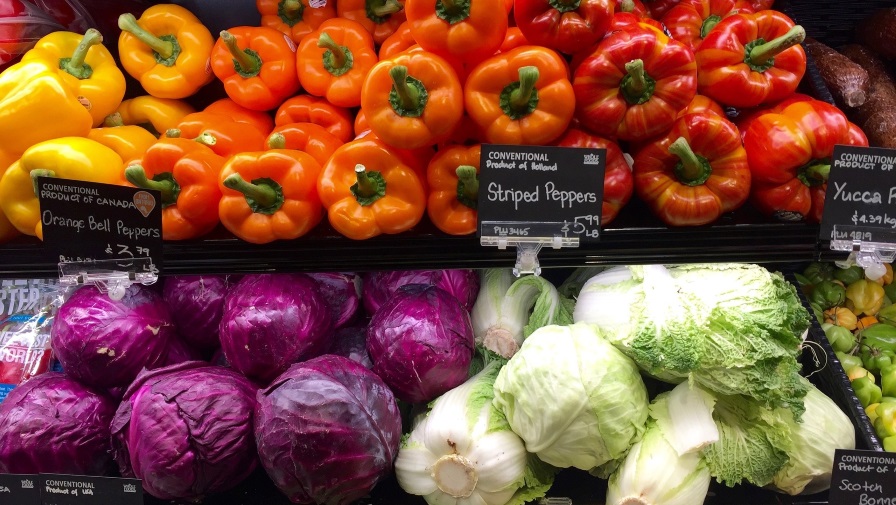At Paramount Farming, Mating Disruption Pays Off
To say Brad Higbee is an expert in mating disruption, the use of pheromones to confuse target pests and reduce their populations, is putting it mildly.
Higbee, who is the research entomologist for the biggest tree nut grower in the world, California’s Paramount Farming Co., and a presenter at the Biocontrols 2015 Conference & Tradeshow, started working on mating disruption in the early 1990s. Back then he was working for USDA-Agricultural Research Service in the biggest pest of apples and pears in the state of Washington, codling moth. “We managed area-wide sites where we demonstrated that the technique was not only effective,” he says, “it greatly decreased the need for pesticide applications.”

Brad Higbee, Paramount Farming Co.
In 2002 Paramount Farming approached Higbee to work on navel orangeworm (NOW) in almonds and pistachios, and he’s been there since then. In 2005 a commercial product, Checkmate Puffer NOW, was introduced by Suterra, a sister company. “I continued to work with mating disruption though, because we needed to develop tools to make treatment decisions,” he says. “For example, are supplemental insecticides needed?”
It Works, And It’s Becoming More Affordable
In 2007, another area-wide program was funded by USDA, this one in California on NOW. Through the course of the seven-year program, Higbee and his colleagues have demonstrated how to make mating disruption work for NOW, including how to make treatment decisions for insecticide applications.
The program was needed more than ever, because in the preceding years prices of almonds and pistachios had gone up, which meant tolerance for damage had gone down. Fortunately, it worked extremely well, says Higbee, ticking off a few germane statistics. “In the state, 60,000 acres were under mating disruption in 2014,” he says. “We expect it to double for 2015.”
Besides the fact that the tolerance for damage keeps going down, mating disruption becomes more and more affordable.
“Also, we are seeing resistance to pyrethroids, which used to be really effective and inexpensive,” he says. “No product really stands out as being more effective now.”
Pyrethroids were so cheap and effective that they impeded the implementation of mating disruption, says Higbee. They could be applied for just $10 an acre, and one spray would keep damage relatively low. “But they’re just not working like that any more,” he says. “And the rest of the products are in the $40, $50, $60 range per application, they require two to three applications in high-pressure situations, and they aren’t as effective as pyrethroids used to be. Our target is 1% damage — or less.”
However, mating disruption does take more monitoring if a “no-insecticide” decision is to be made, says Higbee. For example, growers need to consider what surrounds their orchards and make sure they are monitoring the pest populations. “Are there other sources of moths? We know pistachios, almonds, and figs all can harbor high populations,” he says. “You need to set up traps along the perimeter to get a picture outside your orchard.”
Takes Time To Get Pest Populations Under Control
Finally, growers need to understand that they can’t just implement mating disruption and expect immediate success. Often, just the opposite will happen, says Higbee. “In a high-pressure situation, the most common mistake I’ve seen is backing off insecticides right away. Maybe they go from four sprays to two without any monitoring data because they decide they want to spend ‘x’ number of dollars,” he says. “In some cases that works, but in some high-pressure situations you have to spend more initially to get those populations back under control.”
When Paramount implemented mating disruption, Higbee said the company wanted to get the NOW populations way down beforehand, so they actually sprayed one orchard block three times as much that first year. It was a far cry from when pyrethroids were still effective and nut prices were lower. Prices increased so that for each 1% in additional damage, the grower loses $75 an acre in direct yield loss.
“We did one hull-split spray in the old days but the damage tolerance was much higher,” he says. “Now that we’re shooting for just 1% (damage), it takes a lot more to get there.”
That said, Higbee said the orchard block they had to spray three times as much to get down to 1% damage is a real success story. This past year, now that it’s under the area-wide mating disruption program, they didn’t have to spray it once.









